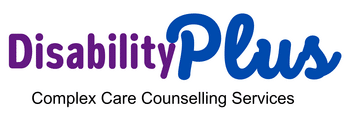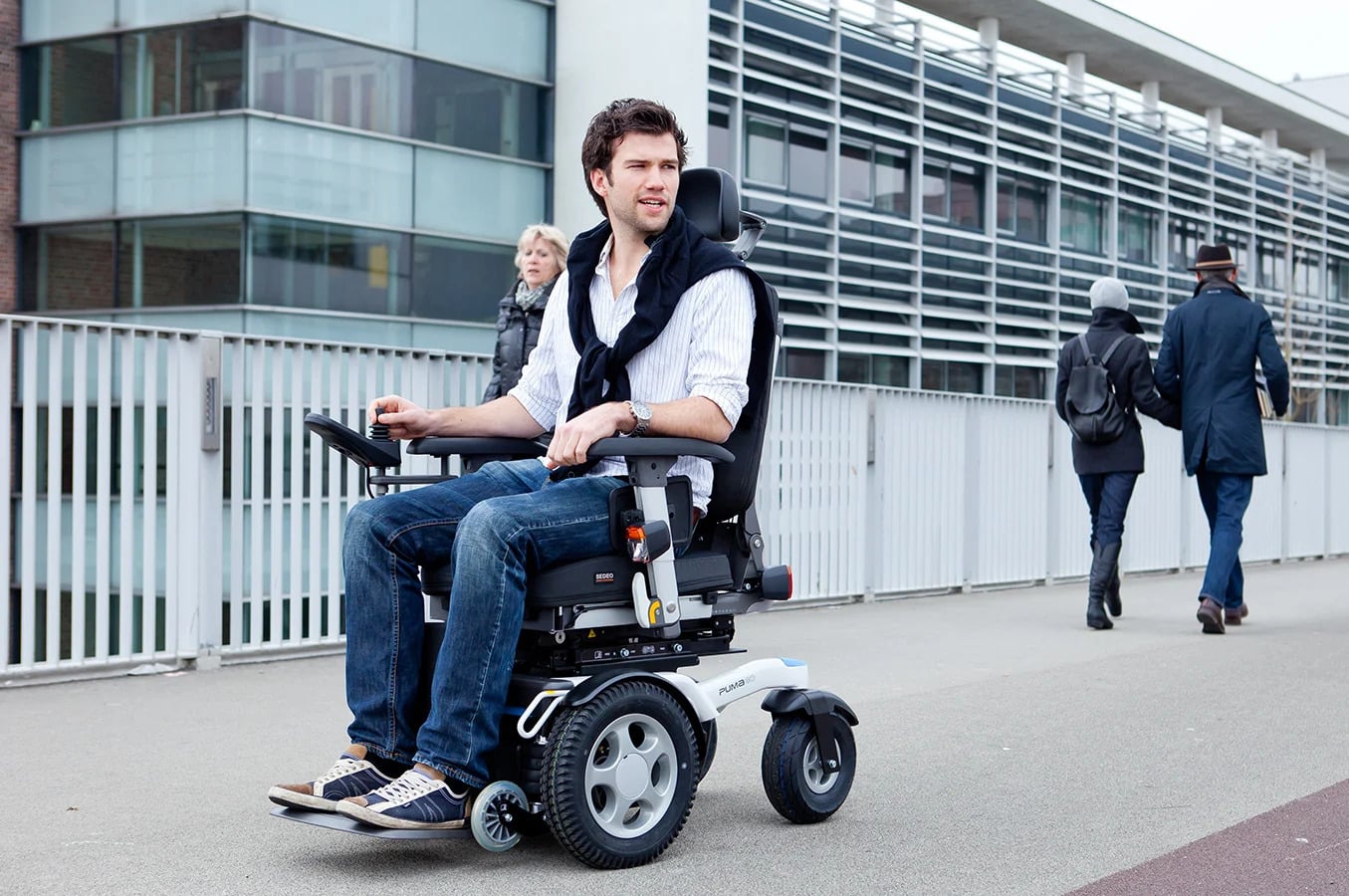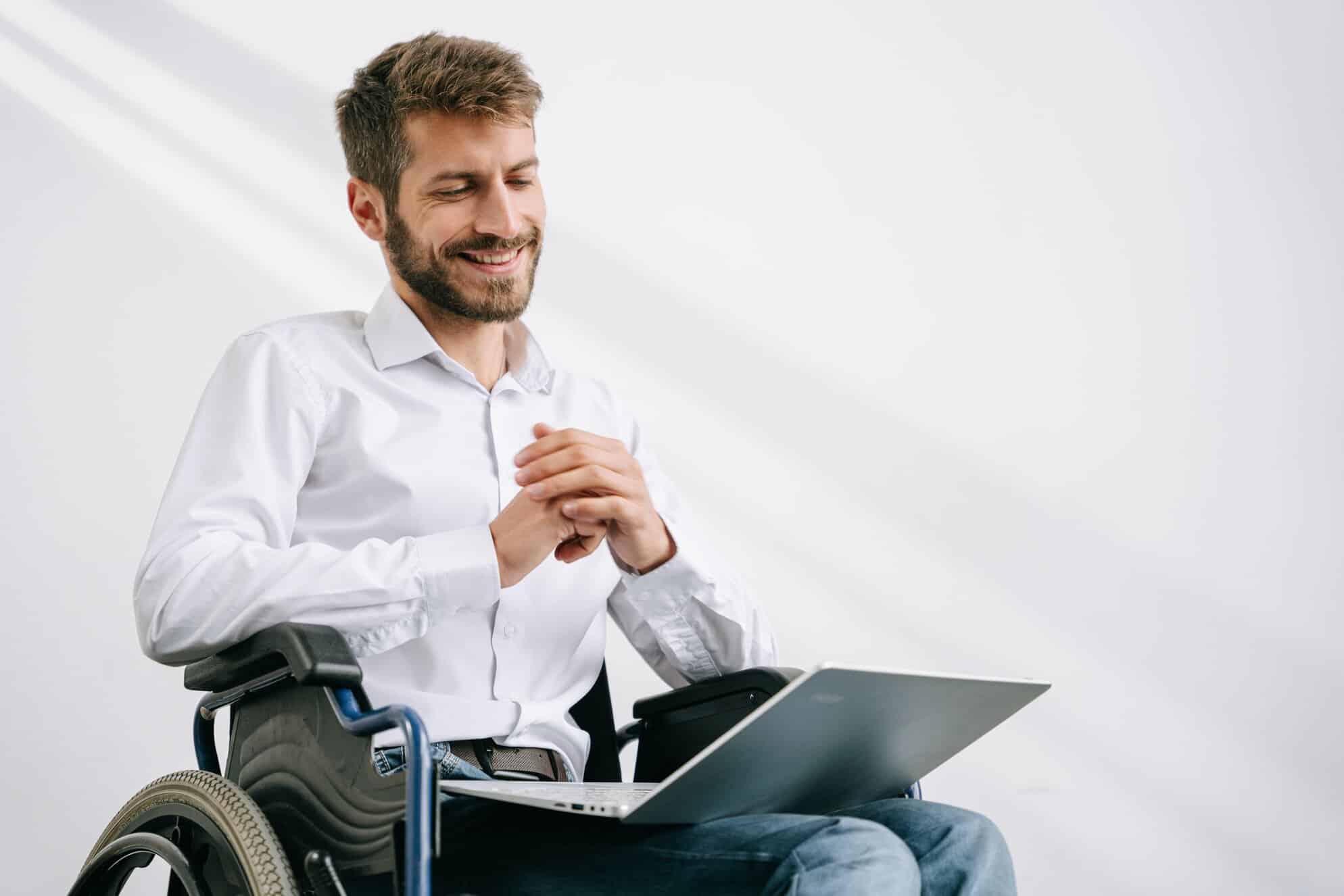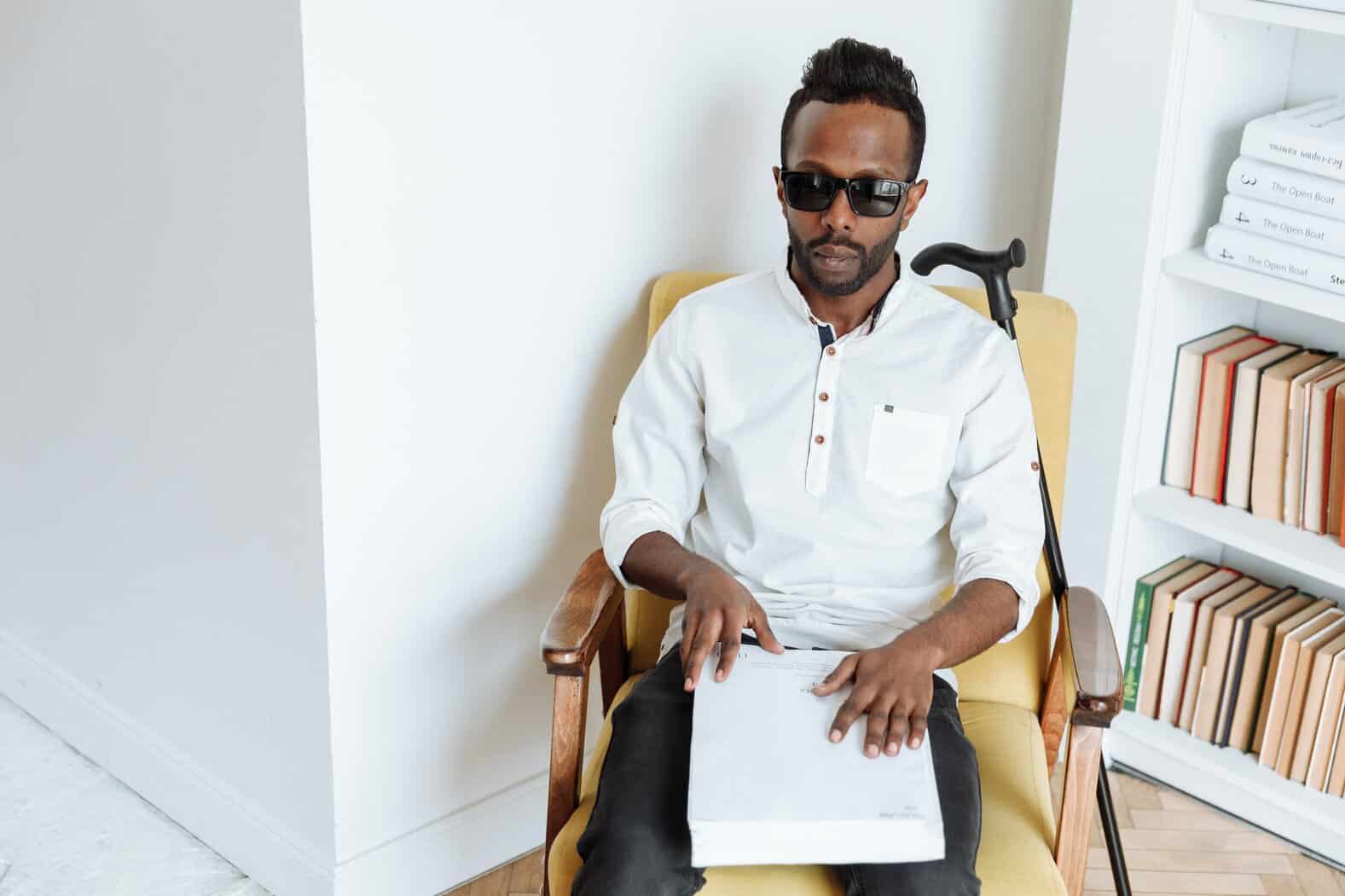Mental Health Counselling for
Adults with Disabilities
Counsellors & Psychotherapists with the same or similar disabilities support adults, carers & family members with specialist services.
You have the assurance your well-being & culture are understood from the first session.

Specialist Mental Health Counselling for
Adults with Disabilities
Nationwide Team of Specialist Therapists
Counsellors & Psychotherapists with the same or similar disabilities support adults, carers & family members with specialist services. You have the assurance your well-being & culture are understood from the first session.
Why DisabilityPlus?
Team
Bringing together a large team of expert therapists who have lived experience is the driving force of DisabilityPlus
Choice
You will be supported by Therapists with the same or similar disability or disabilities
Professional
Fully Qualified & Authenticated Counsellors, Psychotherapists & Psychologists
Free Funding
Free funding applications to the NHS for many of our services. contact us to find out more
Self-Pay
Choice of affordable options including pay by session or buy a group of discounted sessions
Professional Organisations
We support some of the largest solicitors, professional organisations & EAP companies with affordable Disability Counselling
Our Services
Our service is specifically for adults with disabilities; our therapists understand that your mental or emotional health issues could stem from an accident or injury or disability. Our range of services is specifically for people who want expert counselling from therapists who get it & understand it. Select your service from below or click to view all or specialist services.
Our Services
There is no greater disability in society than the inability to see a person as more
Our Mission
Our mission is to provide unprecedented quality and flexible “one-stop shop” care for our clients, we work hard to broaden our scope to enhance adults’ lifestyles and choices for maximum inclusion into society.
Our Vision
Our responsibility as a disability provider of specialist counselling is to ensure every individual receives the highest quality and standard of care possible and that all their hobbies, goals and “bucket list” achievements are achieved.
Why choose us?
- Always doing what’s right
- Always caring for one another
- Always thinking of ways to improve individuals’ mental health
- Always value every individuals needs
Already Know the Service You Would Like?
Already Know the Service You Would Like?
Contact Us
Our Office
DisabilityPlus House
25 Pembroke Avenue
Hersham, Walton-on-Thames
Surrey – England
KT12 4NT
Contact Us
The contact form we use is fully secured, and all information you submit will not be shared with any organisation, person or entity.
Questions you may want to ask
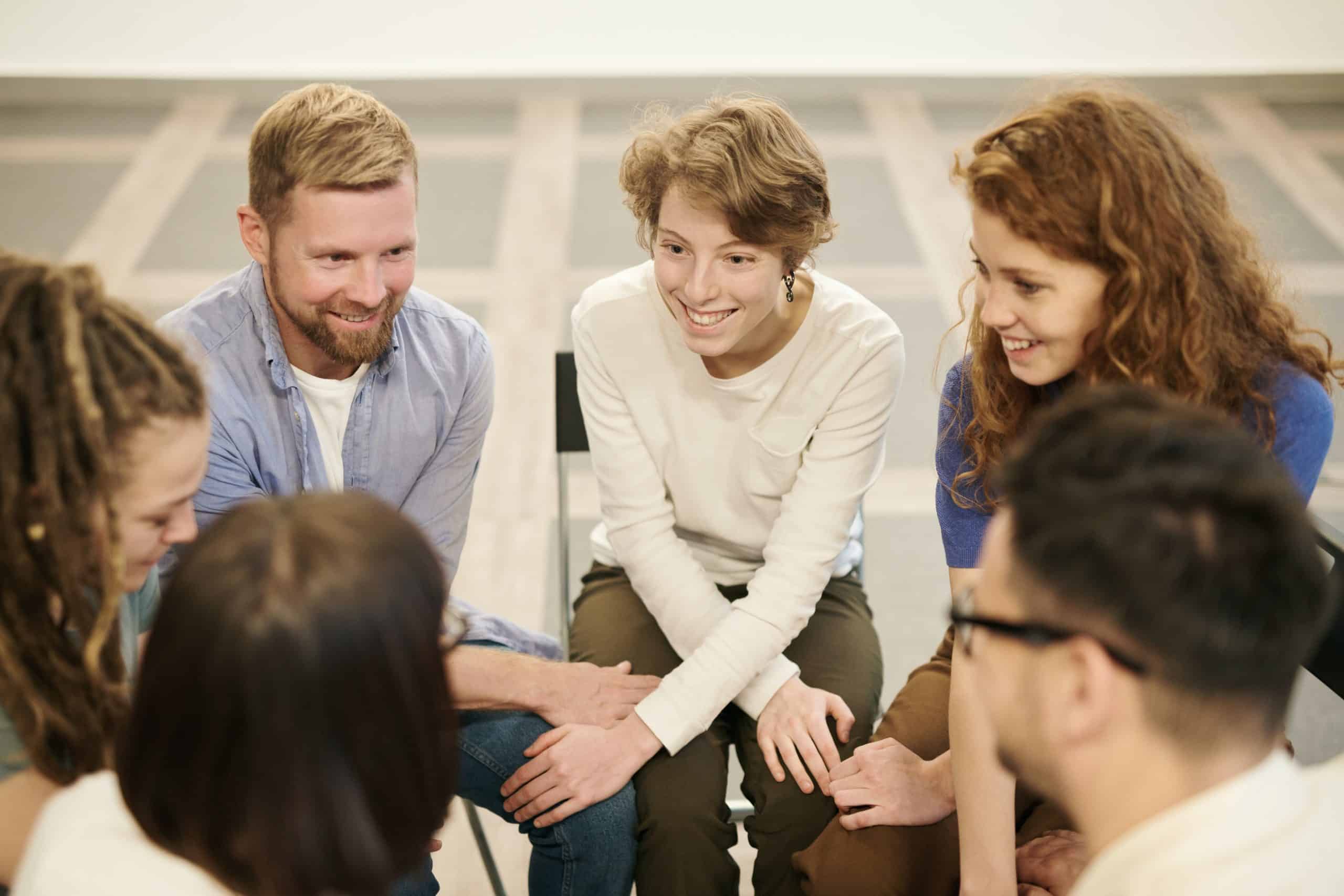
Why Counselling?
Navigating life can often become overwhelming. Whether you’re anxious about finances, struggling with employment, experiencing the loss of a loved one, or coping with your disability or injury.
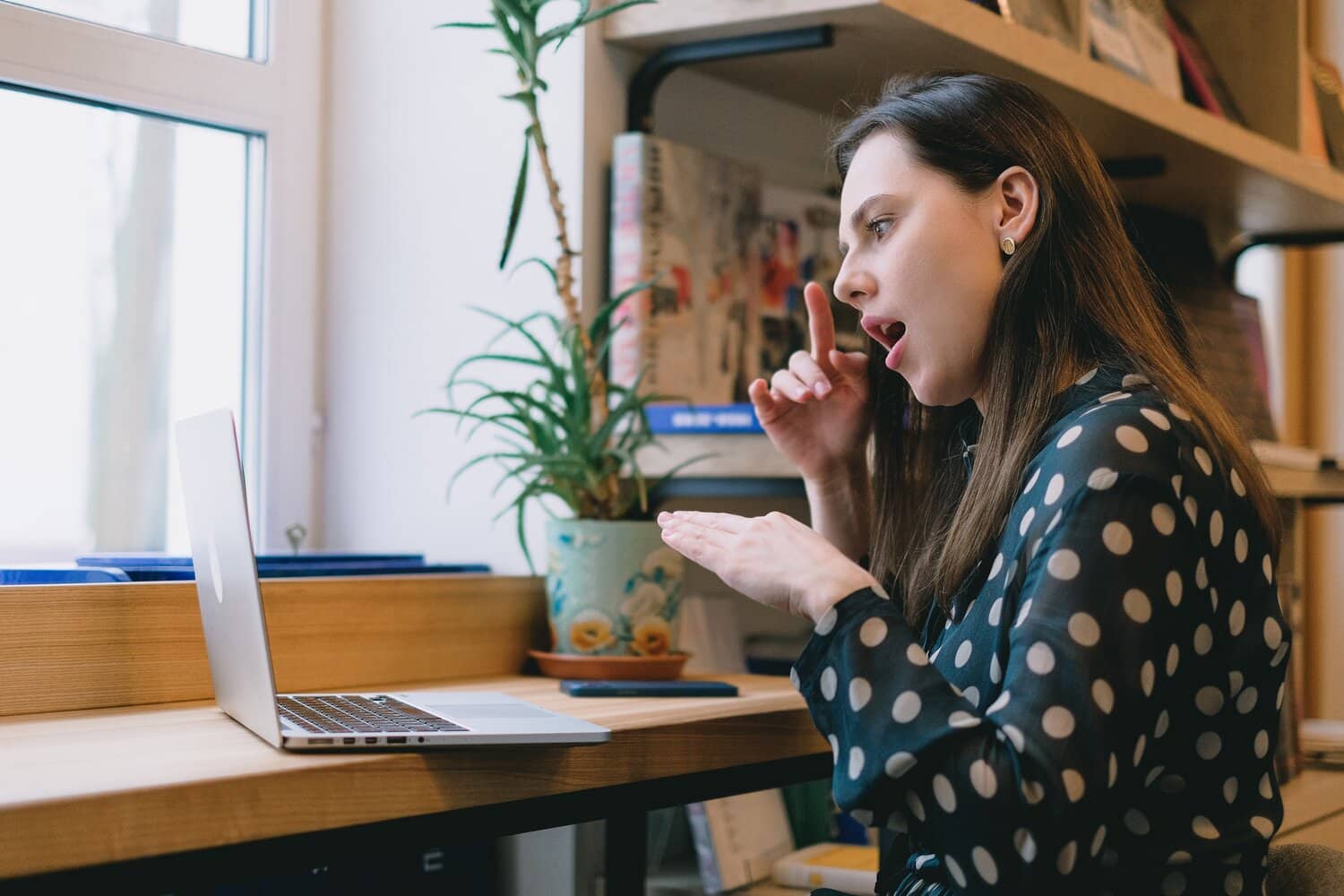
Counselling Sessions
Online therapy is exactly as it sounds. It’s just the same as in-person therapy: the only thing that changes is the setting.
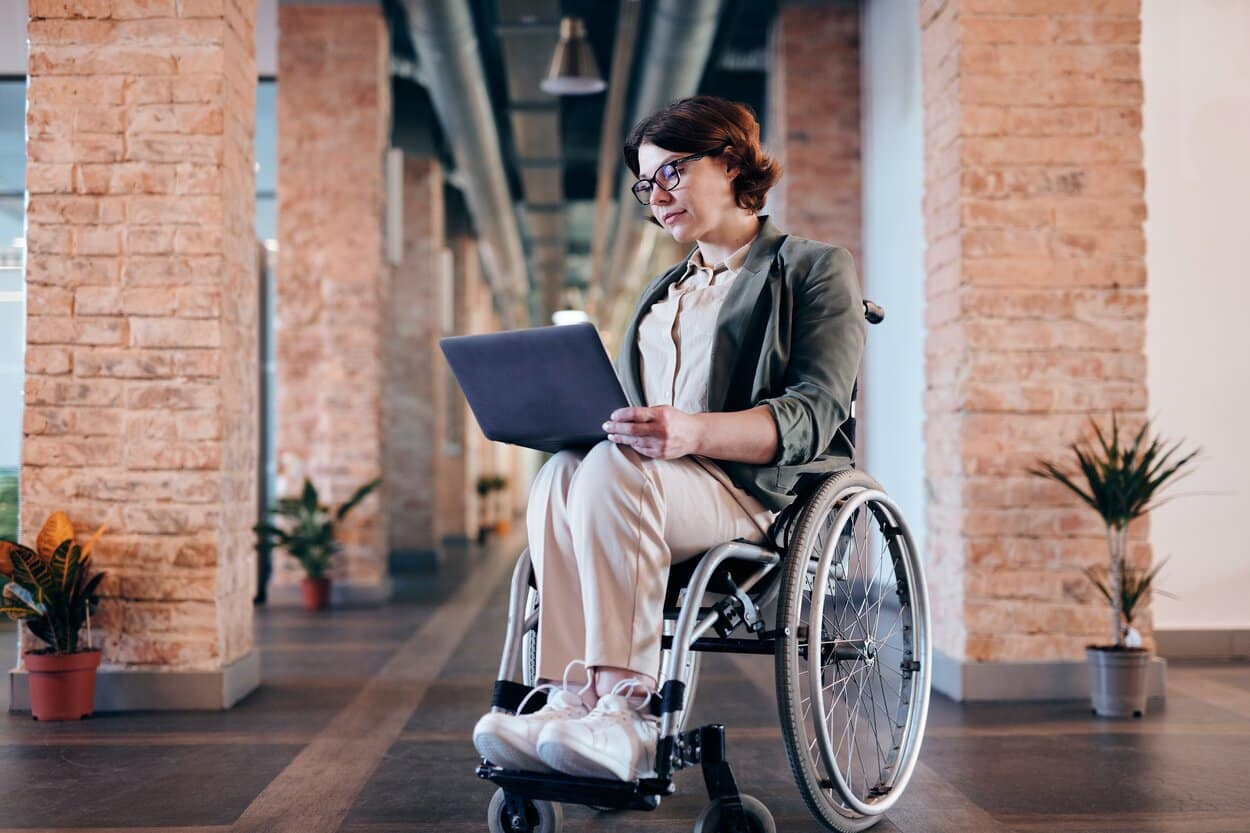
Benefits Online?
There are many advantages to connecting with a therapist online – both pragmatic and emotional. For many of us, taking the leap and starting therapy may be a little daunting.
Read More
Living with a disability can be a long mental and physical journey. It can be just as challenging for those who live with or care for a disabled person. Friends and family may also find it challenging to come to terms with the condition and adapt to a lifestyle that involves new challenges.
You may discover disability counselling beneficial if you are suddenly classed as disabled due to an accident. Similarly, it can provide some of the support you may need if you have a severe health condition.
It can often lead to low social support and financial hardship. These experiences can then be linked to mental health problems like depression and anxiety.
Counselling can help address these issues, help you cope better with the disability, and adapt to the changes it brings.
Disability counselling aims to provide a safe and supportive space for you to discuss your concerns and fears. A trusted professional will help you explore ways to make these more manageable.
Our team are qualified to support critical subjects such as Depression, Anxiety, Stress, Isolation, Grief, Loss, Discrimination, PTSD and Chronic pain as examples.
Our professional counsellors and psychologists provide the support and expert therapy you need to face obstacles and take control.
At DisabilityPlus, we see the whole of you, not just the problems you face.
Affirming your culture and background, we will work together to develop an individualised program for you with a therapist who understands your specific issues from the very first session.
Read More
Gone are the days when the only way to get mental health support was on a therapist’s couch. With the rise of online therapy, you can now speak to qualified counsellors wherever and whenever suits you.
The support you need is literally at your fingertips.
To say that technology has revolutionised our lives is an understatement. Our favourite Chinese takeaway can be on our plates with a few clicks of a button and a few swipes could be all it takes for us to find love.
We’ve also become more used to online GP appointments during the pandemic. So it’s only natural that we want the same convenience and ease when it comes to looking after our mental health. After all, starting therapy takes guts. It’s a big enough step, without having to worry about bus timetables, childcare or social distancing.
Read More
With advantages including accessibility, cost, time, and privacy – it’s unsurprising that more and more of us are turning to the web for support. And you don’t even need to be too digital-savvy to get started. Some of the key benefits of online therapy include:
Accessibility. There are plenty of physical barriers to accessing in-person therapy. You may live in a rural location or not drive. If you have a physical disability, trudging across the city might be a bit of a nightmare.
Or leaving your bed might seem near-impossible when you’re feeling low. Online therapy helps sweep these geographic hurdles aside. Distance is no longer a barrier because there’s someone ready and waiting to help you at the click of a button – right there on your phone, tablet or laptop.
Time. In our hectic lives, ‘me time can be hard to come by. You might have a frantic schedule and work irregular hours. Or perhaps you’re a single parent or a carer always racing against the clock.
Privacy. Worried about bumping into a nosy neighbour in the waiting room? Or maybe you’d prefer chatting about how you’re feeling within the confines of your own home? For some, online therapy offers a comforting sense of privacy. Plus, plenty of security measures are in place to protect your privacy online – from high-grade encryption services to virus and password protection.
Home comforts. Let’s face it: opening up and talking about how we feel can be tough. Tough. But, sometimes, it’s the little things that make it easier. Some of us may feel more comfortable opening up online than in person. It may feel less daunting. Or perhaps you’d feel more at ease if you could snuggle up on your sofa with a cosy pair of bedroom slippers.
Greater insights. Online therapy allows you to show your therapist your home environment – which may provide useful clues for your therapy and treatment. Taking the conversation beyond the confines of a physical therapist’s office can breathe new energy and possibilities into the therapeutic process.
Interesting articles we found

Positive & Negative
Discrimination can be both positive and negative. This may come as a surprise, as it’s usually harmful discrimination we hear about. Let’s look at the two types of discrimination and where you might see them.

Stereotyping
Stereotyping, stigma, and discrimination are challenges people with disability face daily. Much of the disabled community faces exclusion from parts of society that other people take for granted.

Classed as
A disability can be any physical, cognitive, sensory, emotional or developmental condition that hampers or reduces a person’s ability to carry out everyday tasks.
Read More
Discrimination can be both positive and negative. This may come as a surprise, as it’s usually harmful discrimination we hear about. Let’s look at the two types of discrimination and where you might see them.
Negative Discrimination
Negative discrimination means putting a person at a disadvantage due to their protected characteristics. For example, this could mean overlooking a person for promotion because of their religion, despite being the most qualified employee for the role.
Positive Discrimination
Positive discrimination means favouring an individual because of their protected characteristics, despite that person being less capable or less qualified than another. For example, if a person is awarded a promotion due to being disabled, even though another person without any protected characteristics was more qualified for the position, this could be seen as positive discrimination.
The goal of positive discrimination is usually to reduce inequality in the workplace. This could include increasing the number of employees from minority backgrounds within the business. However, this does not necessarily mean that positive discrimination is the right thing to do or that it is legally justifiable.
Protected Characteristics – Explained
When we’re talking about discrimination, whether that be positive or negative discrimination, the term ‘protected characteristics’ will regularly crop up. But what are the protected characteristics, and what does it mean to possess one of these characteristics?
The Equality Act 2010 sets out the protected characteristics against which it is illegal to discriminate. If a person holds one of these characteristics, it is unlawful to discriminate against that person due to their protected characteristic.
The protected characteristics that are set out in the Equality Act are as follows:
- Age
- Disability
- Gender reassignment
- Marriage or civil partnership
- Pregnancy and maternity
- Race
- Religion or belief
- Sex
- Sexual orientation
Examples Of Positive Discrimination
There are many different ways in which positive discrimination can take within the workplace. Let’s take a look at a few examples to illustrate this.
- Two people are applying for the same job role. One of the applicants is from an ethnic minority and is underqualified for the position. However, the hiring manager decides to hire the applicant to increase the company’s diversity, turning down the more qualified applicant. This could be classed as positive discrimination as the hiring manager has chosen the applicant from an ethnic minority rather than the applicant who was best qualified for the role.
- A business is forced to make redundancies due to a reduction in profits. An employee with a disability is underperforming, but the company decides to make a better-performing employee redundant to maintain their record for employing those with disabilities. This could be classed as positive discrimination as redundancies were made due to protected characteristics rather than based on individual performance.
- There is an opportunity for promotion within the business, and two employees decide to apply – one male and one female. The female employee is better qualified and has more experience than the male. However, as all the existing managers are female, the hiring manager decides to promote the male to increase the team’s diversity. This could be seen as positive discrimination, as the hiring manager has chosen the employee based on their gender rather than their skill set.
What Are The Effects Of Positive Discrimination In The Workplace?
Whilst positive discrimination may seem like the answer to increasing diversity and equality in the workplace, some negative consequences may occur.
The most significant impact of positive discrimination in the workplace is that it may affect morale and employee satisfaction. If your existing employees start to think that decisions when it comes to hiring and promotion are being made based on protected characteristics rather than skills, experience and performance, you may find that they become dissatisfied with their job and morale suffers as a result. They could even lodge a claim at an employment tribunal for discrimination if they are overlooked for promotion.
Begin to make hiring decisions based on protected characteristics and ignore skills and experience. You might also find that the collective skills and expertise held by the team drop as a result. Whilst your team’s diversity and equality may increase, it will hurt performance if you don’t consider qualifications and experience in your hiring decisions, and your operations may suffer as a result.
To avoid positive discrimination in the workplace, it’s essential to ensure that you make decisions based on pre-determined criteria rather than the protected characteristics that the applicant holds.
Is Positive Discrimination Legal In The UK?
It can be tempting to utilise positive discrimination to increase diversity in your workforce and give more significant opportunities to those with protected characteristics. But is positive discrimination legal in the UK, and is it something you should use?
In the UK, treating a person with protected characteristics more favourably than someone who is better qualified or experienced and doesn’t have a protected characteristic is illegal. Although you may think that you are discriminating for a positive reason, it is still discrimination and is therefore unlawful..
What Is The Difference Between Positive Discrimination And Positive Action?
At first glance, you may think that positive action and positive discrimination are the same things. After all, both aim to increase diversity by giving opportunities to those who might otherwise be overlooked. However, you need to be aware of some important differences between positive discrimination and positive action.
Positive discrimination is treating people with protected characteristics more favourably than people in other groups, even if they are less qualified or experienced. On the other hand, positive action involves taking steps to increase representation without using preferential treatment.
A key example of positive action is organisations providing funding and support for women interested in Science, Technology, Engineering and math (STEM). STEM jobs are typically male-dominated; however, by providing targeted initiatives aimed at women (who tend to be underrepresented), organisations can make positive steps towards increasing diversity in their workforce.
It’s important to note that positive action could become discrimination if the company decides to employ a less qualified female in the STEM role to increase diversity rather than a more qualified male. However, if a male and female both applied for the same role and were equally qualified and experienced, the company would be allowed to choose to employ the female over the male to increase diversity in the workforce under positive action.
Read More
Disability exclusion has stemmed from the belief that having a disability makes you ‘less than.’ In recent years, the disabled community has also been silenced by the popularised positivity movement that believes ‘the only disability is a bad attitude.’ Although on a surface level, this statement sounds encouraging, both attitudes have the underlying message that it is up to the disabled community to change if they want to be part of society.
Disability activist Stella Young explained brilliantly the barriers that people with disability face are societal and that no amount of positivity will be able to break these barriers down.
“You know, no amount of smiling at a flight of stairs has ever made it turn into a ramp. Never. Smiling at a television screen isn’t going to make closed captions appear for people who are deaf. No amount of standing in the middle of a bookshop and radiating a positive attitude is going to turn all those books into Braille,” said Stella.
To become an all-inclusive and accessible society, we need to change how we view disability and collaborate with the disabled community to break down barriers.
The social model vs the medical
So, how do we change our lens on disability? Two models view disability in vastly different ways: social and medical.
The medical model views disability as a consequence of a health condition, disease or accident that disrupts function. The model focuses on preventing or curing the illness. Here, disability is something ‘wrong’ that needs fixing to make a person more ‘normal’.
The social model of disability completely flips this perspective. It sees disability as the attitudinal, physical, systemic, communication, and technological barriers created by society. It does not deny the impact of an individual’s impairment, but it does seek to put the responsibility on the community to accommodate people living with disability, rather than expecting the individual to adapt to society.
Removing barriers in society
The social model of disability states that there are six different types of barriers people with disability face. Barrier removal requires expertise, collaboration, advocacy and legal backing. Everyone can play a part in educating themselves about these barriers and learn how to create new pathways to ensure our society is as accessible and inclusive as possible.
Attitudinal barriers
Attitudinal barriers are created by individuals who can only see the impairment, not the person with a disability. At its worst, believing in the stigma attached to disability can result in bullying, isolation and even violence.
On the flip side, people can be incredibly condescending, using people with disability as ‘inspirational porn.’ Although this belief has no malicious intent, people with disability do not exist to make others feel good. Being condescending can cause just as much damage as being purposefully hurtful.
Stella Young spoke about the effects different attitudes have on the disabled community in her 2014 TED Talk, “I’m not your inspiration, thank you very much.”
“I want to live in a world where we don’t have such low expectations of disabled people that we are congratulated for getting out of bed and remembering our own names in the morning. I want to live in a world where we value genuine achievement for disabled people,” said Stella.
This barrier is the underlying issue of all the other barriers. People may be unaware of their negative attitudes, so it is important to make a conscious effort to unlearn these stereotypes. Everyone is deserving of the same respect and rights no matter their disability.
Physical barriers
Physical barriers refer to inaccessible environments due to how they were designed.
Examples include buildings with no wheelchair access, inadequate lighting that creates poor visibility for people with low vision, and sidewalks that are too narrow for walking aids or doorknobs that are difficult to grasp for people with arthritis.
There is already a lot of change in this space, like introducing wheelchair-accessible beach mats and low sensory quiet hours at grocery stores. However, there is always more to be done. Architects, designers, builders, and town planners must put accessibility first to ensure everyone can enjoy society, rather than a select few.
Systemic barriers
Systemic barriers are the laws, policies, practices, or strategies designed by the government or organisations that discriminate against people with disabilities.
The systemic barriers often stop people from living their day-to-day life. Someone in a wheelchair may struggle to get places if their local train station does not have a ramp, or someone with sensory processing issues may struggle to complete work if they are denied a reasonable adjustment of using noise-cancelling headphones. Peter, on the autism spectrum, has found his productivity at work has increased since using noise-cancelling headphones.
Unfortunately, discriminatory laws and policies are often only changed after immense pressure from advocacy groups.
Alastair McEwin AM is the Commissioner for the disability royal commission and firmly believes that removing systemic barriers is key to achieving inclusion.
“My drive for the work I do is, quite simply, to ensure that in the future, no disabled person has to experience discrimination or barriers to mainstream society in the same way I have experienced discrimination and barriers as a deaf person,” said Alastair.
Communication barriers
Communication barriers affect people with disabilities that impact their hearing, speaking, reading, writing, or understanding. Communication is intertwined with everything we do. We need communication to work, build relationships and seek support.
Just because someone does not communicate the same way you do does not mean they should be left out of the conversation. Breaking down communication barriers can be very simple. Speech pathologist Dr Joanne Steel clearly suggested ways to improve communication.
“Regardless of their speech abilities or cognitive skills, everyone has the right to communicate. So treat them the same as you would any other person, talk directly to them, and ask them questions,” said Joanne.
Other ways to improve communication include hiring an Auslan interpreter at speaking events, including braille or electronic versions of menus at restaurants, and writing important information in simple, plain English.
Technological and digital barriers
Technology has many benefits for people with disability. It has helped to break down some of the barriers on this list. Thanks to technology, people with disability have been able to access education, work remotely and improve communication and community connection. However, there are still some significant accessibility barriers that come with technology.
Breaking down barriers as an employer
Employers can break down barriers for people with disability in many different ways. One of the most impactful ways is to hire someone with a disability. Not only does employing someone with a disability help the person become a contributing member of society, but it can also have significant benefits for the business.
At EPIC Assist, we understand it can be hard to know where to start when hiring someone with a disability for the first time. We work closely with employers to understand their needs and find the right person for the job. We also offer guidance and can help organise workplace adjustments and provide ongoing support after the employee is on the job.
Contact EPIC Assist today if you want to help break down barriers for people with disability and make diverse and inclusive hiring a priority.
Read More
In some cases, people may have a combination of some or all of those mentioned above. A disability can be present at birth or later in life, depending on the nature of the condition.
Physical
A physical disability can either temporarily or permanently affect an individual’s mobility and/or physical capacity. Such disabilities include muscular dystrophy, epilepsy, ME, spina bifida, a spinal cord or brain injury or cerebral palsy.
Sensory
A sensory disability can affect one or more of an individual’s senses, such as touch, taste, smell, sight, hearing and spatial awareness. Hearing loss, blindness and autism all fall under the ‘sensory disability’ category.
Mental health
Disabilities that affect an individual’s mental health include obsessive-compulsive disorder (OCD), depression, bipolar disorder and schizophrenia. These fall under the Equality Act 2010 as they can affect how a person thinks and behaves and restrict their ability to carry out daily tasks.
Learn more about mental health and disabilities.
Learning
A learning disability is a disorder of an individual’s central nervous system, which affects their learning process. People with learning disabilities may need support to develop new skills and understand complicated information. But, it doesn’t mean that the individual is incapable of learning; it just means they learn differently.
Chronic
The Equality Act 2010 states that for a person to meet the definition of ‘disability’, the impairment will have a substantial and long-term effect on the person’s ability to carry out everyday tasks. For the purpose of deciding whether a person is disabled, a long-term product has lasted at least 12 months; the total period it’s due to last is likely to be at least 12 months, or the effect is expected to stay for the rest of the person’s lifetime.
